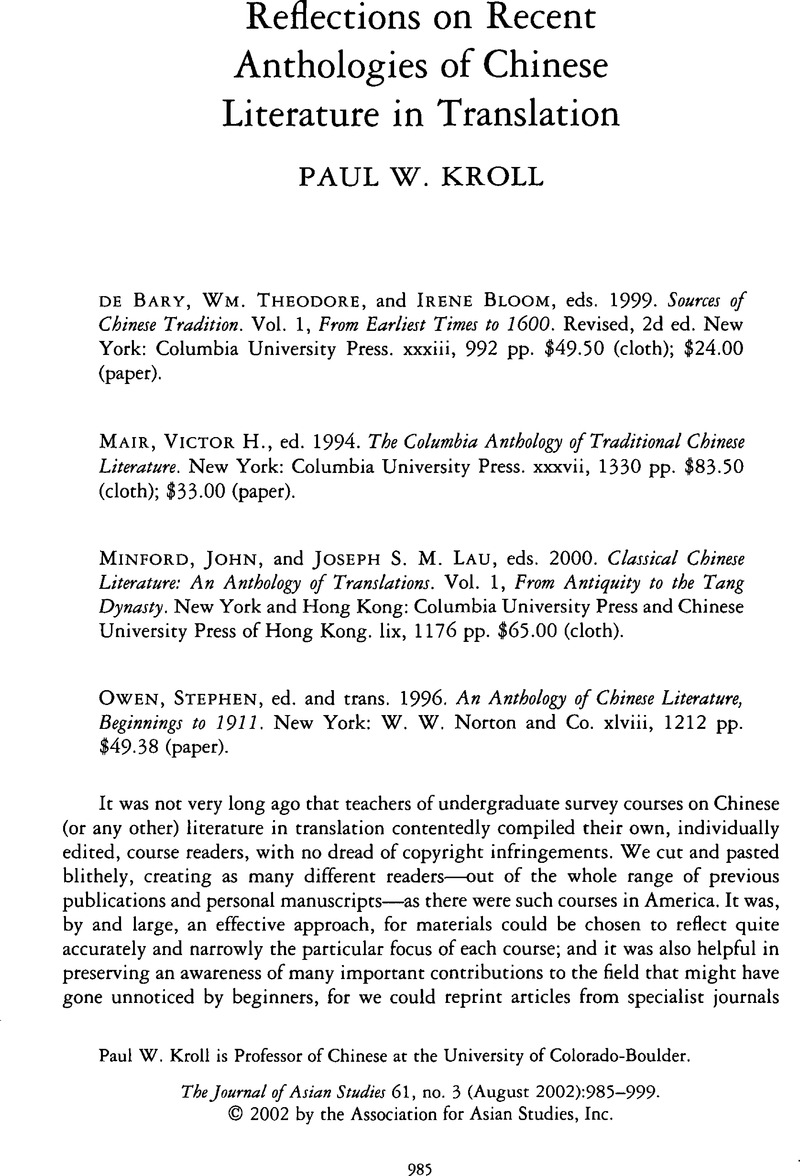Crossref Citations
This article has been cited by the following publications. This list is generated based on data provided by Crossref.
2003.
Annual Bibliography.
Early China,
Vol. 28,
Issue. ,
p.
265.
2008.
Bibliography of Paul W. Kroll.
Tang Studies,
Vol. 2008,
Issue. 26,
p.
1.
Miller, Ana K.
2015.
Circulating the peripheries: Small publishers, short story collections and Madinah: City Stories from the Middle East.
The Journal of Commonwealth Literature,
Vol. 50,
Issue. 2,
p.
115.
Xu, Minhui
and
Yu, Jing
2019.
Sociological formation and reception of translation.
Translation and Interpreting Studies,
Vol. 14,
Issue. 3,
p.
333.



